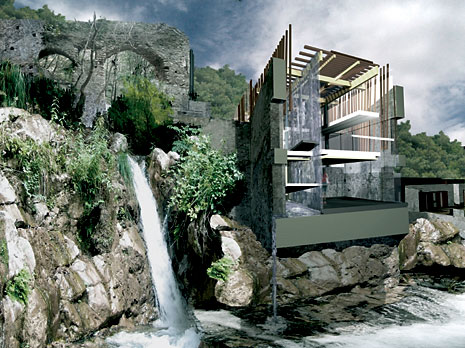 [Image: Center for Biodiversity by Tecla, part of the Waterpower project; via Domus].
[Image: Center for Biodiversity by Tecla, part of the Waterpower project; via Domus].There was an interesting, though brief, article posted on Domus last month about Italy's Valle dei Mulini, which Domus describes as "a fascinating microcosm of industrial history, dotted by abandoned paper mills."
In order "to prevent this heritage from disappearing," a local planning and design group, calling itself Waterpower, "asked a series of Italian and foreign designers to make projects for the renewal of the deserted water and paper mills. There was one condition: that they take the 'power of water' as the poetic metaphor and technological guideline of their projects, turning the valley into an eco-sustainable environment."
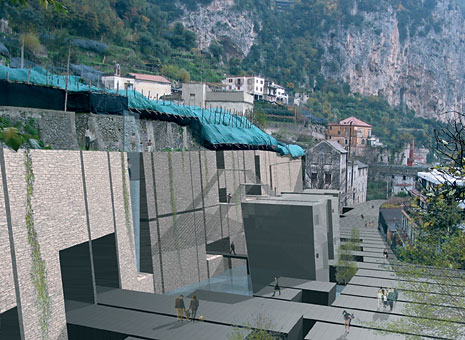 [Image: A parking garage and "river remodelling" structure by Labics, part of the Waterpower project; via Domus].
[Image: A parking garage and "river remodelling" structure by Labics, part of the Waterpower project; via Domus].The resulting proposals look at programmatically different reuses of the old mills, including purposes as diverse as a youth hostel (complete with water from the Canneto River flowing through part of the building), a Center for Biodiversity –
 [Image: The Center for Biodiversity by Tecla, via the Waterpower project].
[Image: The Center for Biodiversity by Tecla, via the Waterpower project].– newly cultivated "lemon terraces," a spa, a kind of outdoor historical walkway, a "Waterfall Home" deeply fixed into the bedrock, complete with some kind of Slow Food studio/kitchen –
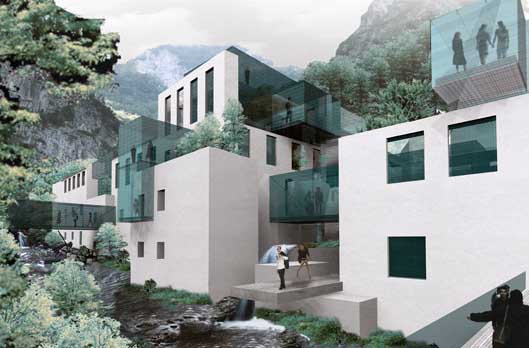
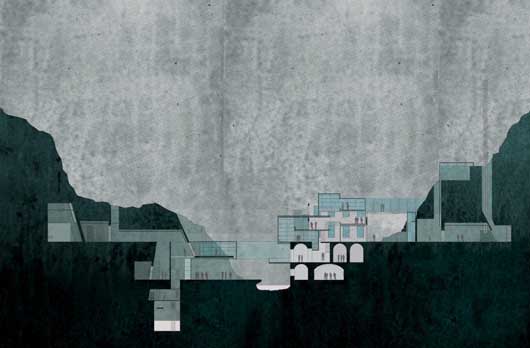 [Images: The Waterfall Home by Nemesi, via the Waterpower project].
[Images: The Waterfall Home by Nemesi, via the Waterpower project].– and a hydraulics museum.
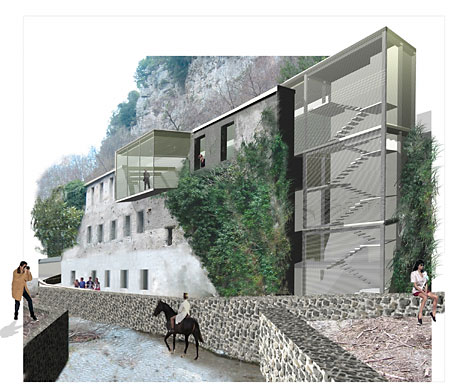 [Image: A "Hydraulics Museum & Panoramic Bar" by Sudarch, part of the Waterpower project; via Domus].
[Image: A "Hydraulics Museum & Panoramic Bar" by Sudarch, part of the Waterpower project; via Domus].The Waterpower website has a lot more information about the various projects, including a short history of the Valle dei Mulini itself.
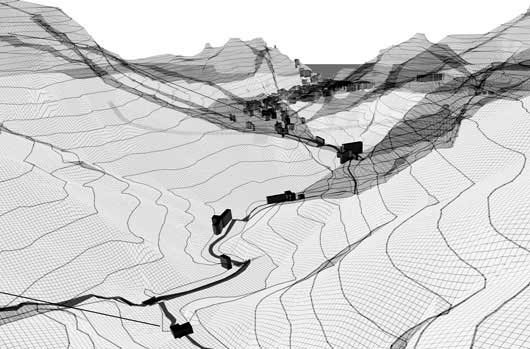 [Images: A topographical view of the Valle dei Mulini, via the Waterpower project].
[Images: A topographical view of the Valle dei Mulini, via the Waterpower project].We read, for instance, that the project "aims to recover a landscape and a system of pre-industrial water mills (mulini) currently in danger of collapse beyond repair."
- As described with a wealth of illustrations in Diderot and D'Alembert's Encyclopedie, from the early 13th century the paper mills, iron mills, and later hydro-electric power stations exploited water power through ingenious systems of channels, tanks, level drops, funnels and water wheels to produce energy to make things. The mills were carefully distanced one from the next to exploit the height differential and hence the water power. From the port of Amalfi the network of mills rises 3km inland and 350m in height.
In any case, I think it's a cool project. Read more at the official website.
No comments:
Post a Comment